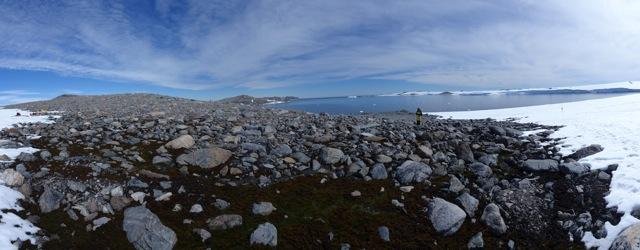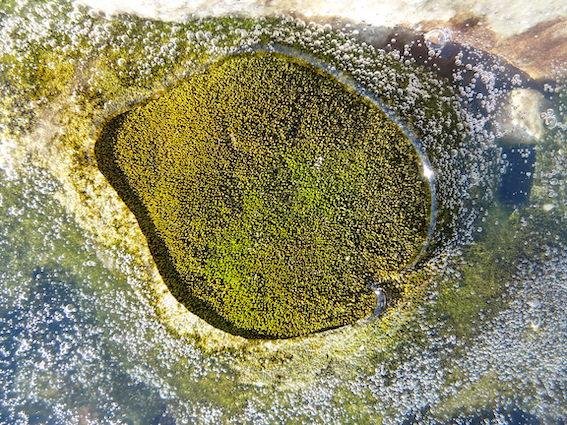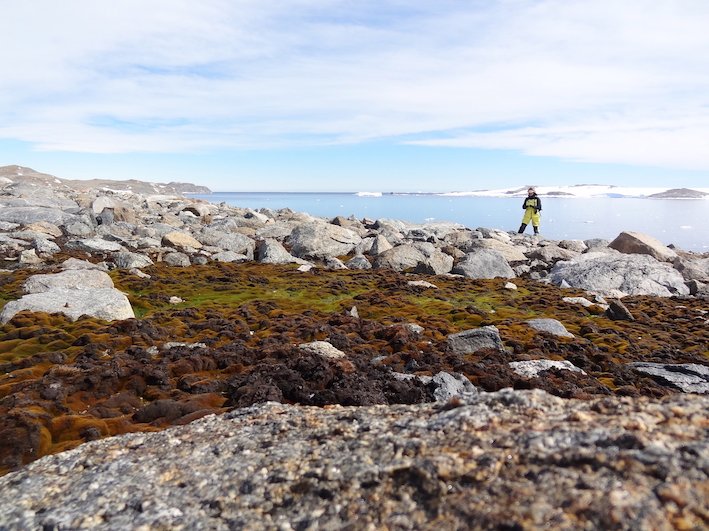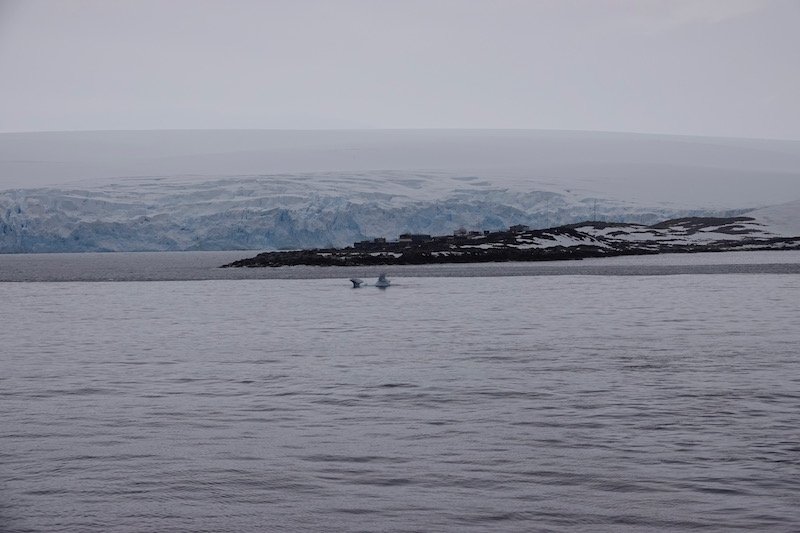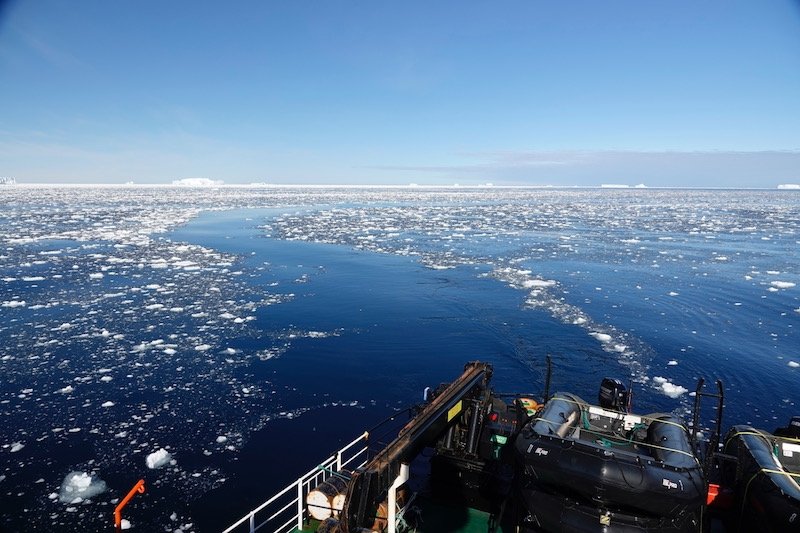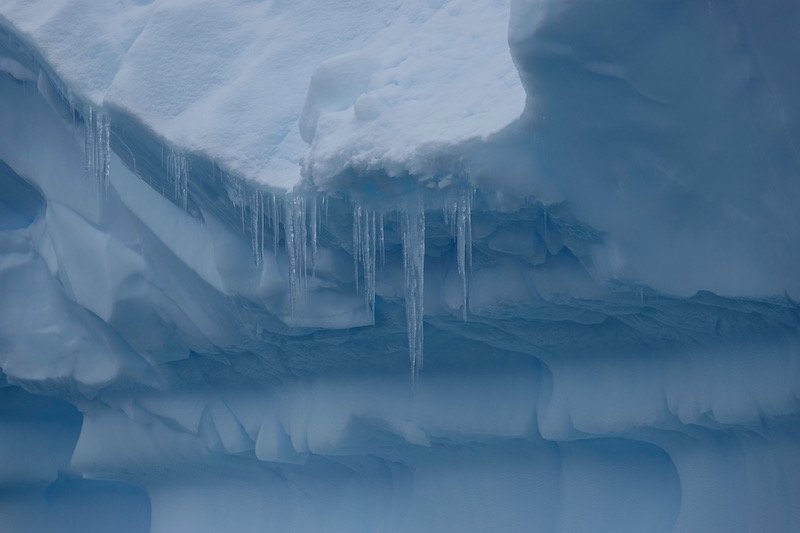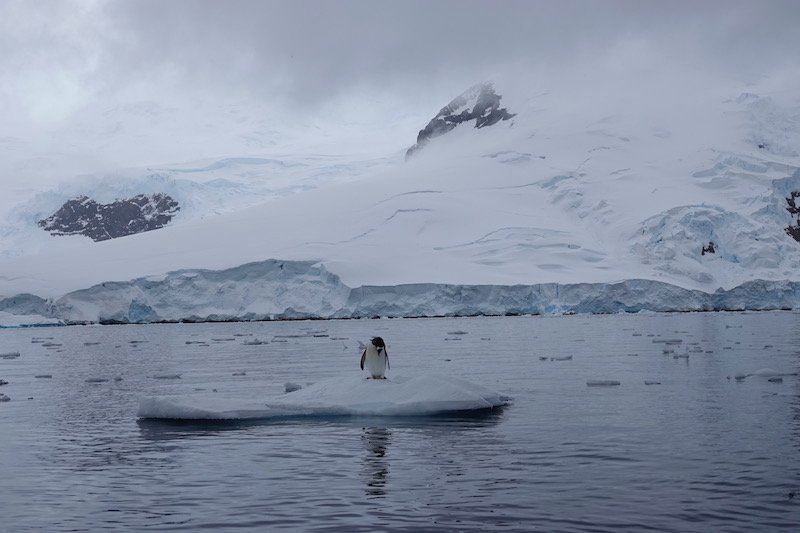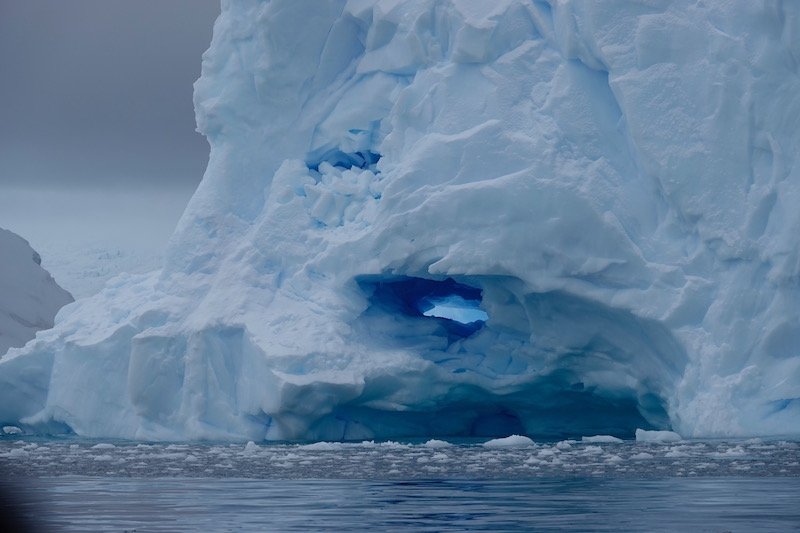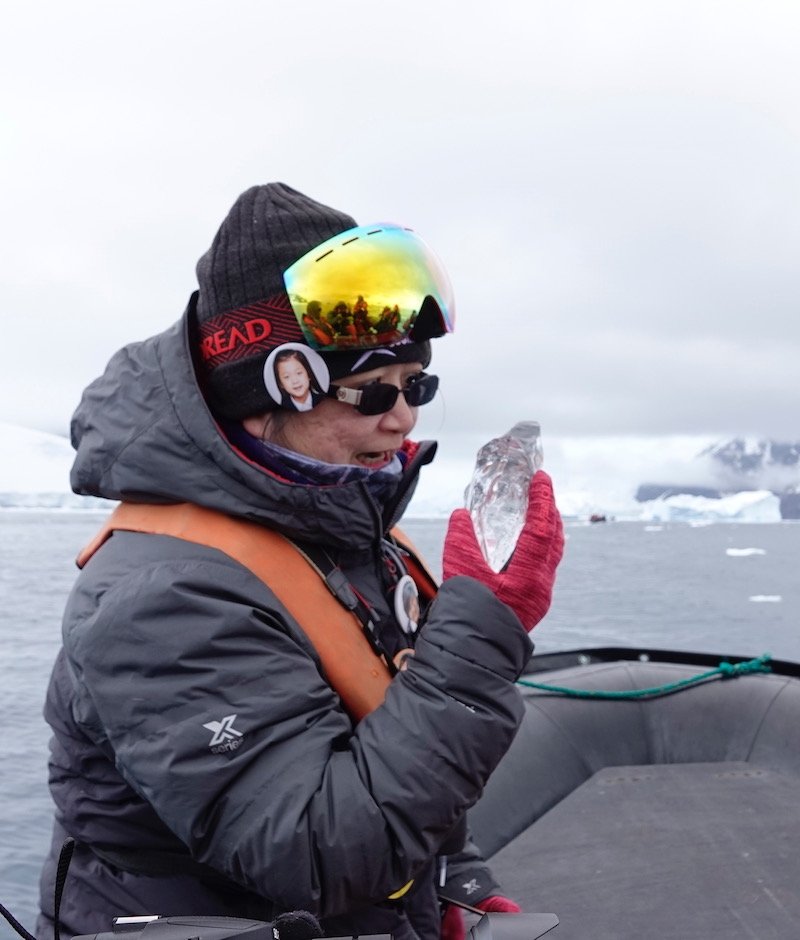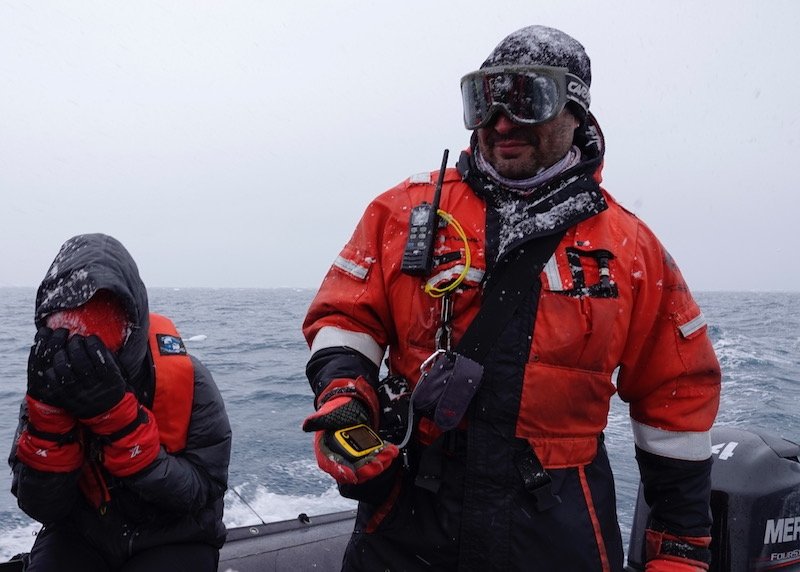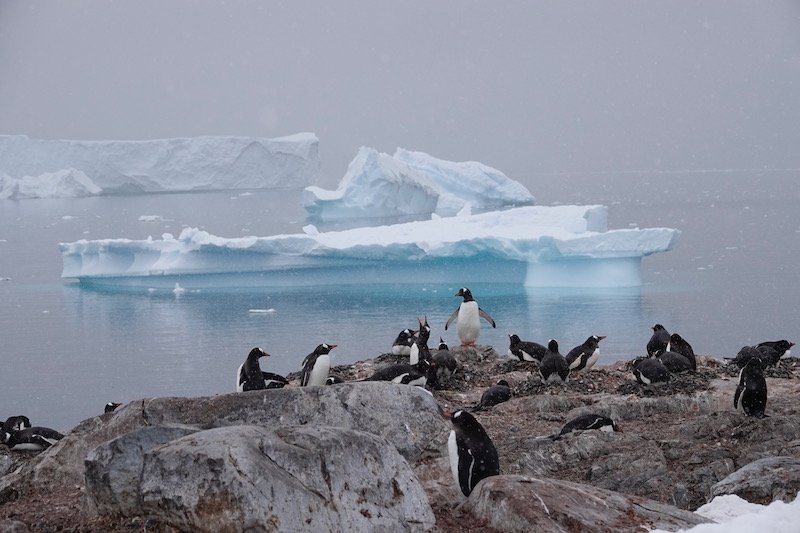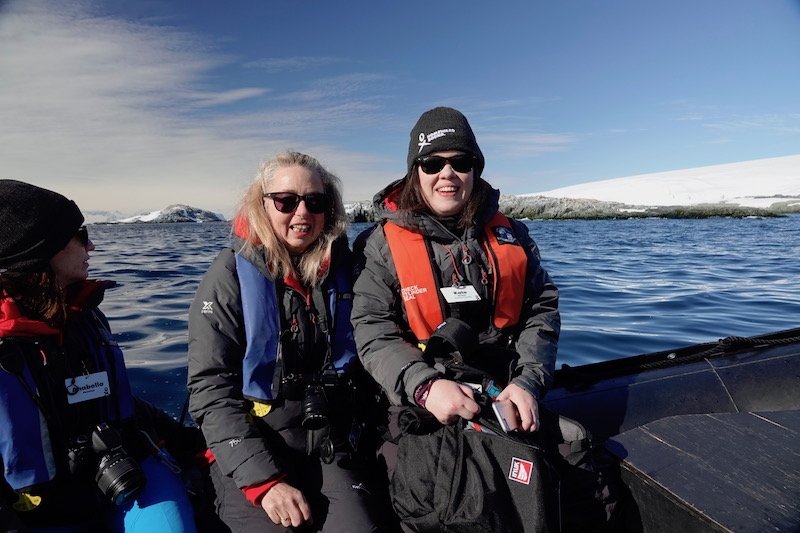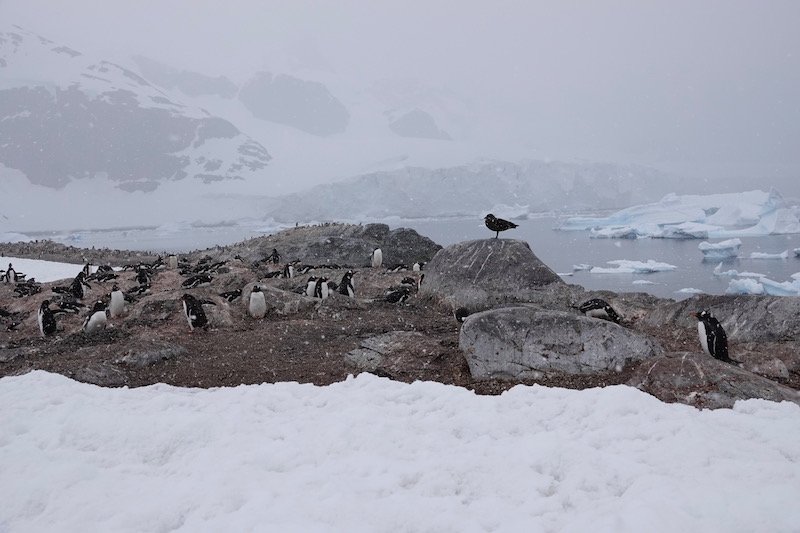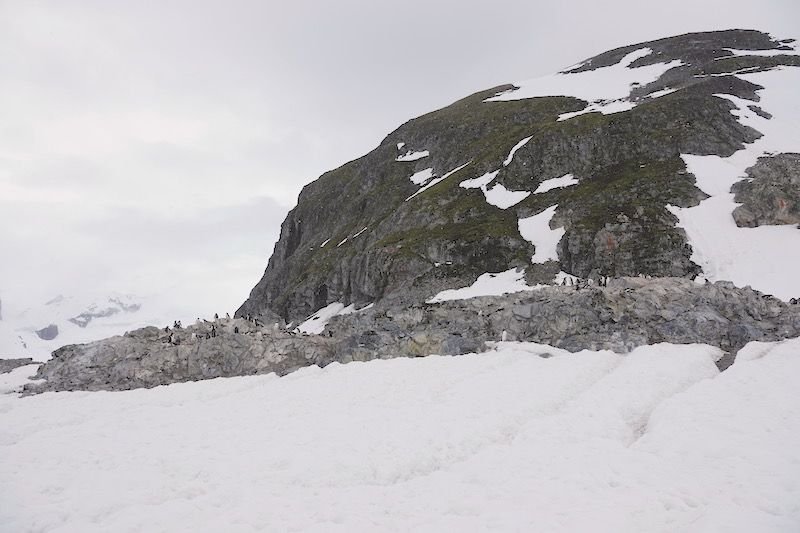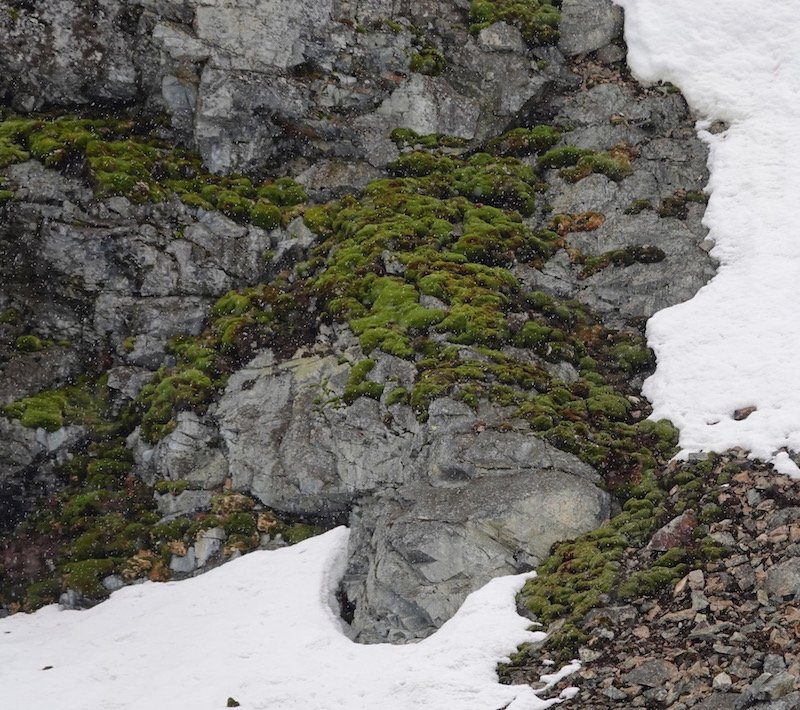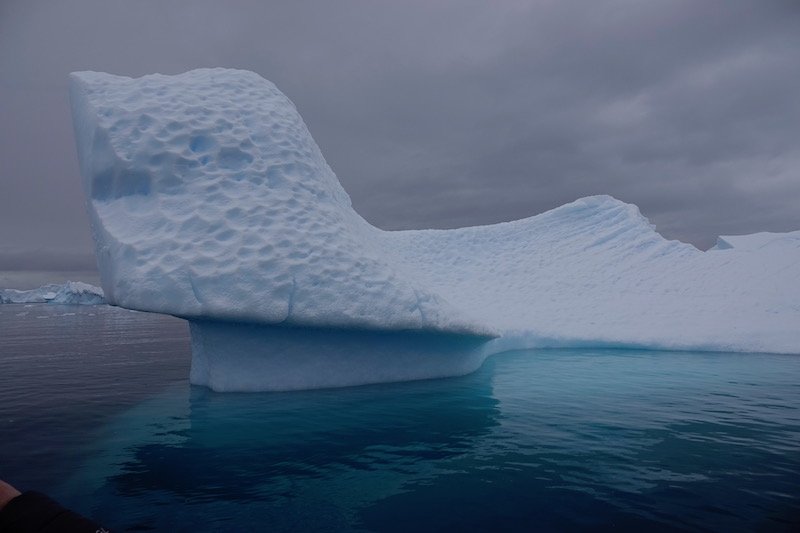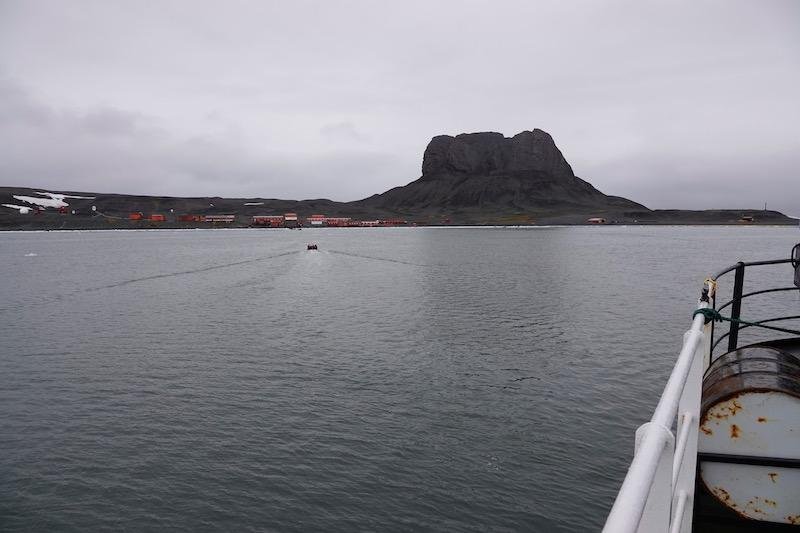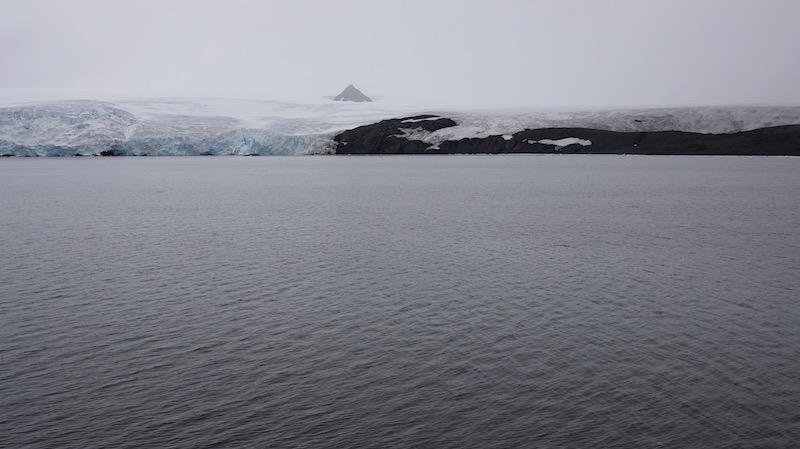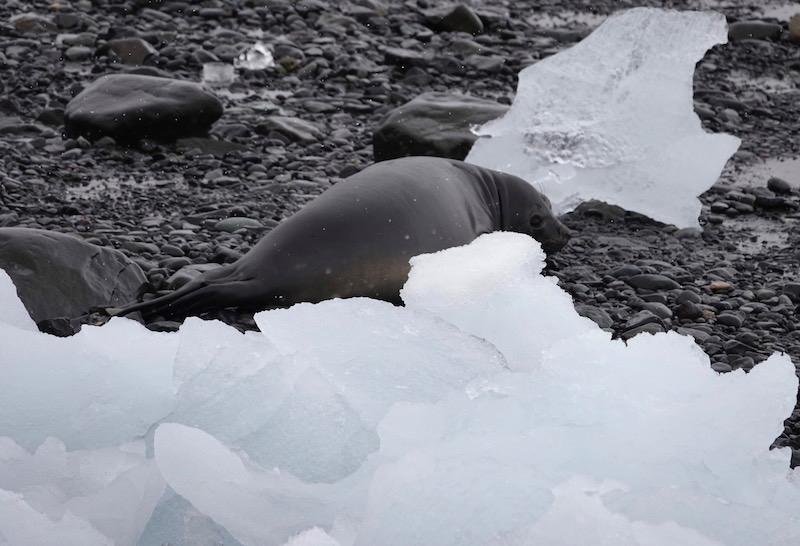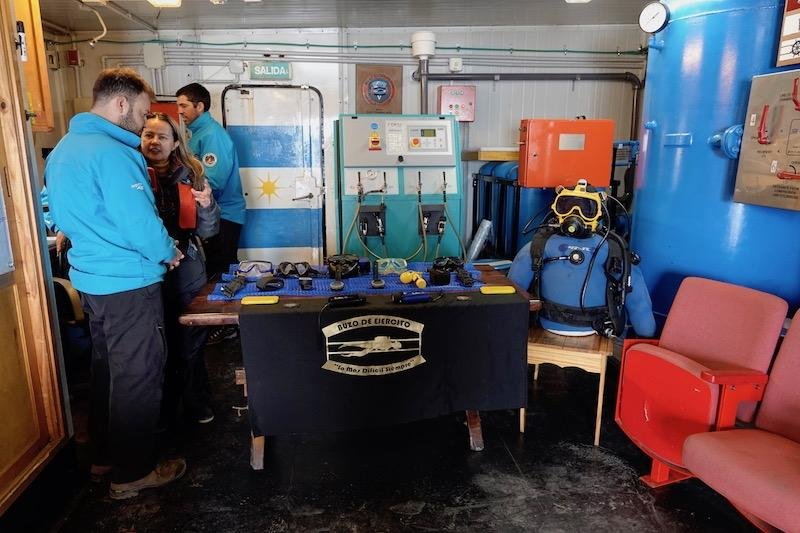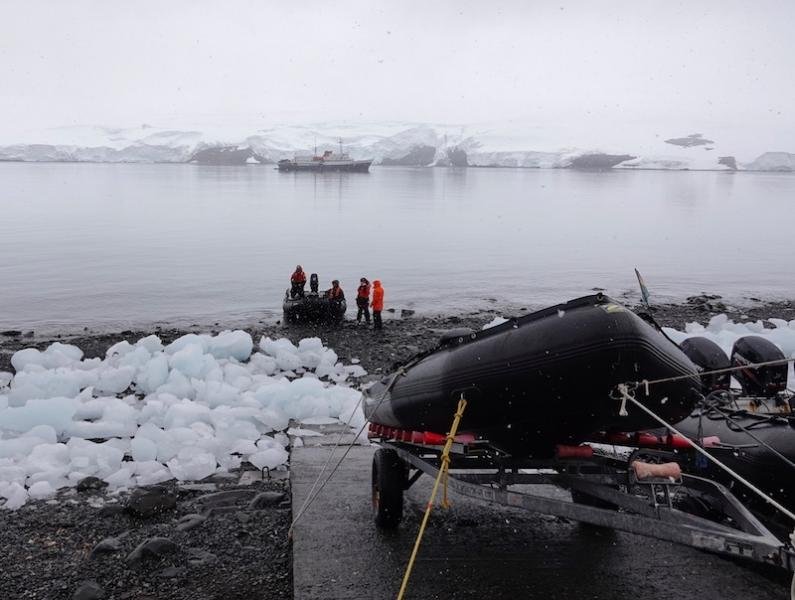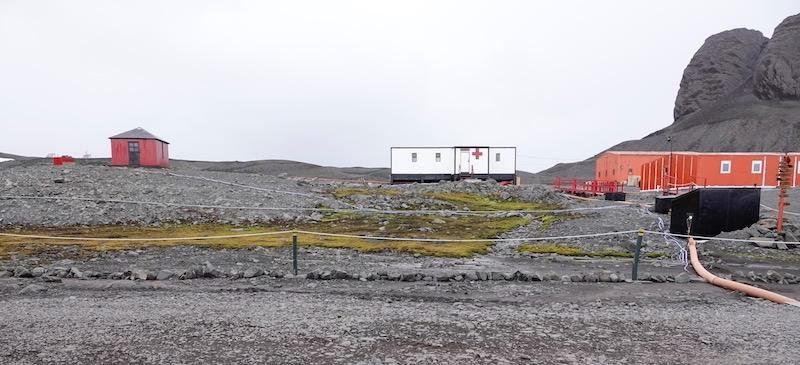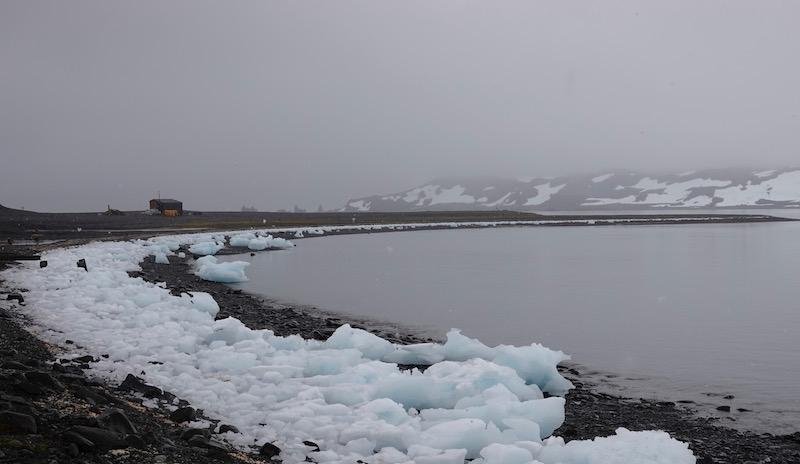Displaying items by tag: Antarctic moss
Even in Antarctica - it’s hot in the sun!
We know that Antarctica is the frozen planet and we tend to think that its animals and plants must also be well adapted to cold conditions. As a result we probably assume that they do better in cold conditions than other plants or animals. But is that really true?
Working with mosses, the main plants, in Antarctica I have often wondered this? I know they are amazing at surviving the cold. Try putting your salad vegetables in the freezer and you quickly see that many plants are very bad at tolerating freezing. Some plants are even damaged by chilling temperatures above zero (fridge temperatures). But we can collect Antarctic mosses, dry them and put them in the freezer and then take them out after a few months, or more than 50 years, and they will grow again! So yes, they can tolerate freezing conditions - they put up with about 8 months a year in nearly complete darkness and temperatures as low as -40˚C
But that doesn’t mean they like it cold. Are they just able to tolerate cold but would be more productive if summers were warmer? If so, can they warm themselves up above those usually chilly summer air temperatures of 1-2 40˚C? Are they really in Antarctica because they can survive the cold winters while other plants can’t? In which case its more about lack of competition from flowering plants than actually being truly cold loving.
Monitoring moss beds in Antarctic a 20 year story
Climate change is affecting Antarctica and minimally destructive long-term monitoring of its unique ecosystems is vital to detect biodiversity trends, and to understand how change is affecting these communities. Back in the 1990s when I first visited Antarctic the tradies at Casey would ask “So what is happening to the moss?” given that they knew we were studying it. At the time we didn’t know, because long term monitoring was not something that anyone was interested in funding. But it bugged Dr Jane Wasley & I that we didn’t know the answer. So, when State of the Environment Reporting started, we agreed to try and come up with a monitoring system that would answer the question.
Anatomy of a heatwave: how Antarctica recorded a 20.75°C day last month
In late February there were reports of record-breaking high temperatures from scientists working on the Antarctic Peninsula. At the time Diana King and I were in NSW in Australia having spent the summer experiencing smoke pollution from the Australian bushfires along with extremely hot days. Our colleague Dana Bergstrom was sending us reports of rain at Davis Station in East Antarctica. Given that almost all precipitation falls as snow in Antarctica, these were strange reports. Our Chilean colleagues, Marisol Pizarro Rojas and Gustavo Zúñiga were also reporting that there was no snow around the Escudero research station on King George Island and that every day was perfect for field work, a most a worrying development. There is always bad weather sometime in Antarctica!
Homeward Bound 7 - Palmer, peatmoss and politics
We were booked to go ashore at Palmer Station, the American base on Anvers Island, on the 9thJan, but the brashy, sea ice had blown in around the station making it too risky for the Ushuaia staff to take zodiacs in. So about 10 expeditioners from Palmer come aboard the ship to tell us about the science that is happening on the base.
I am really happy to see that one of my colleagues from the US Dr Zicheng Yu(Zic) from Lehigh University, is one of those researchers. Like my group, Zic is using stable isotopes of carbon, and also oxygen, to understand how plant growth is affected by climate change in Antarctica. Specifically, Zic is a paleoecologist and works with peat mosses. These are mosses that have been growing for thousands of years in wet, boggy sites and the older mosses become compressed and peaty as the plants above press down. The wetness helps to preserve the moss which means it can contain climate records that go back for thousands of years. Zic has sampled such mosses from Patagonia and is interested in how far South the peat mosses extend. The Antarctic mosses we work with are younger, hundreds, rather than thousands of years old, but we are working with individual plants, not peat. In peat there can be layers and layers of different mosses and even grasses and other plants as you delve down into the core. Our individual plants are only a few centimeters tall whereas peat cores can be meters deep. It’s all a matter of scale. In East Antarctica the mosses grow a few millimeters each year, whereas on the peninsula they might grow a whole centimeter in a year!
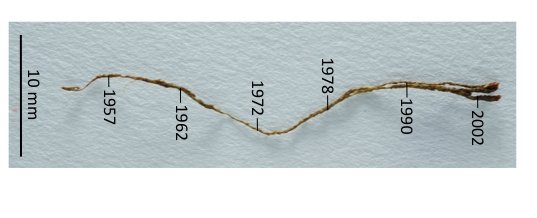 Zic and I last met at the SCAR Open Science meeting in Davos in June, when Dr Melinda Waterman and I spoke at the same session as him. Zic tells everyone on the ship about the work that we are doing on Antarctic moss which is great visibility for me! He also has a University research position in China and so I introduce him to the Chinese HB3 team.
Zic and I last met at the SCAR Open Science meeting in Davos in June, when Dr Melinda Waterman and I spoke at the same session as him. Zic tells everyone on the ship about the work that we are doing on Antarctic moss which is great visibility for me! He also has a University research position in China and so I introduce him to the Chinese HB3 team.
After the formal session we go onto the front deck for photographs and also get to talk to the Palmer staff. It’s really nice to meet a range of expeditioners including scientists and the staff who keep the station running and support the researchers on the base.
All the expeditioners at Palmer were affected by the US Government Shutdown. Staff employed by the government were working for no pay and having trouble ordering supplies for the station for the coming season. Some of the scientists cannot get to their sites to do research, because the public servants in the US who prepare the permits are on furlough and can’t process the permits. This is such a waste of everyone’s time and is ultimately a waste of the NSF grant money. I am hoping that some of this has resolved since we got back and Zic and his colleagues got their work done. Lets hope the rest of the season is productive for them all.
Palmer is part of the Long-Term Ecological Research (LTER) Network with a study area extending North and South of Palmer from the coast to several hundred kilometers to the west side of the Antarctic Peninsula.
Homeward Bound 6 - Glacier zodiac cruise in Anvord Bay, near Neko Harbour,
We were supposed to go ashore at Neko Harbour but it was ice bound. The wind has blown the sea ice close to shore and so we can’t get ashore in the zodiacs. It’s too dangerous to risk puncturing them.
So, we have a glorious glacier cruise and see more spectacular ice formations both cascading off the continent and in the icebergs and sea ice.
We collect clear, black ice for the bar and see glacial deposits where rocks and silt are layered into the icebergs.
We also find some moss on a Point near Neko Harbour. I am hoping it’s a new description and we can go back to study it! Although it’s on a pretty sheer rock face so it would be tough to collect. I think we would need a drone to collect samples for us.
We were on an iceberg cruise on the zodiac and our guide was Juan, a fellow plant enthusiast so when I spotted green through my binoculars and asked if it was moss or algae, he was happy to get closer to check it out. It was on a huge volcanic plug with full length dykes running down the steep cliffs.
On one side was a stream of moss cascading down terraced steps in the rock face. Very exciting. Just above the moss we spotted 2 Antarctic tern chicks which were probably helping to fertilise the moss stream.
Then of course we were miles from the ship and the weather closed in so it was foggy on the way back and for the first time we had to navigate back to the ship on GPS. It was cold and felt properly Antarctic in the zodiac and we had to keep an eye out for bergy bits of sea ice. Very exciting for us all because it felt a bit intrepid, but I didn’t want to get a reputation for being the last one back on the zodiacs and holding up the ship. Don’t want to set a bad example!
Homeward Bound 5 - Cuverville Island
Each day the participants on the voyage spend 4-5 hours on the leadership program and we attempt to have a landing or a zodiac cruise if landings are not possible. I am leading the on board science program with Dr Katherine Duncan from the University of Strathclyde. Kate was a participant on the second voyage (HB2) back in March. We hadn’t met before this voyage but had talked on whats app and zoom calls whilst preparing the program along with the science faculty founders, Dr Justine Shaw (University of Queensland) and Dr Mary-Anne Lea (University of Tasmania). Kate is a wealth of knowledge about the HB program, the ship and what we need to bring with us. Luckily, both she and Dr Sophie Adams (our wellbeing guru and also a HB2 alumna) brought real coffee, an important component for wellbeing on the ship as elsewhere!
Having only met on the 28thDecember, Kate and I are now sharing a cabin, running a science theme together, enjoying our new-found friendship and planning future science grant applications. We also get to be on one of the first zodiacs ashore in order to supervise the landings and are often last back as we round up the stragglers who just want an extra minute ashore and, that last photograph or video.
The next landing is on Cuverville Island (7thJan) where we find Gentoo penguins nesting and skuas patrolling.
Cuverville Island is very snowy and the chicks were tiny, but at one end it has the most amazing wall of moss, a whole cliff face, green and grey against the white-grey sky. I would love to visit again and take moss samples for dating, to see how old these moss forests are.
We watched penguins rolling eggs or feeding chicks as well as well as mating. Presumably many of these Gentoo penguins have also had aborted attempts at rearing their first clutch of chicks this season.
I take the opportunity to segue from penguin sex to moss sex to the amusement of the nearby participants and Fern Hames (Arthur Rylah Institute)our on-board Sci-Comms facilitator.
On the way back to the ship we have a spectacular iceberg cruise, full of amazing blue, turquoise and white shapes against the grey of the sea.
Antarctic moss biflavones show high antioxidant and ultraviolet screening activity
Ceratodon purpureus is a cosmopolitan moss that survives some of the harshest places on Earth: from frozen Antarctica to hot South Australian deserts. In this study we isolated nine compounds from Australian and Antarctic C. purpureus and considered how they might help this species to survive under such extreme conditions.
Homeward Bound 3 visits Carlini Base
Saturday (5thJan) we are back on King George Island, at the Argentinian Carlini Base. Carlini is the only station in Potter Cove and is named after a scientist Alejandro Ricardo Carlini. The station sits beneath the impressive Tres Hermanos mountain and the nearby glaciers are retreating rapidly exposing new rocky areas.
The weather is overcast, cloudy with wet snow. Young elephant seals haul out amongst the chunks of glacial ice that are washed up along the beach.
We tour the Science labs, the Dive sheds and also are given refreshments in the station mess. There is a compression chamber in the Dive facility and a technician to operate it in case the divers run into problems.
The scientists on station came from many countries and tell us about the current science research programs that are running on and around the station including a lot of marine biology and hydrology. It is great to see another base in action and to hear first-hand from the scientists about their research. It is also wonderful that so many people on station are prepared to give up their Saturday to entertain visitors.
The projects include remediation projects aimed at understanding how plants and microbes can clean up contaminated soil around Antarctic stations. Many sites in Antarctica are contaminated with oil and other chemicals as a result of historic waste practices and some of my students have investigated how tolerant Antarctic mosses and alga are to oil and if Macquarie Island plants can help promote soil clean ups.
I was particularly excited to see so much moss and lichen around Carlini, as well as the two vascular plants that grow on the peninsula region of Antarctica, the grass Deschampsia antarctica and the pearlwort, Colobanthus quitensis. The lichens and mosses have even started to colonise the whale bones that remain from historic whaling in the region.
Antarctica’s ‘moss forests’ are drying and dying
The lush moss beds that grow near East Antarctica’s coast are among the only plants that can withstand life on the frozen continent. But our new research shows that these slow-growing plants are changing at a far faster rate than anticipated.
Read more in the Conversation
Plus here is a link to our latest youtube video
Sharon Robinson, Melinda Waterman & Andrew Netherwood (2017) East Antarctic mosses reveal a windier, drier climate
The paper is available here if you want to read it. This email address is being protected from spambots. You need JavaScript enabled to view it. if you want a copy.
Robinson SA, King D, Bramley-Alves J, Waterman MJ, Ashcroft MB, Wasley J,Turnbull JD,Miller RE,Ryan-Colton E, Benny T, Mullany K, Clarke, LJ, Barry, L, HuaQ. (2018) Rapid change in East Antarctic terrestrial vegetation in response to regional drying. Nature Climate Change8, 879-884, DOI: 10.1038/s41558-018-0280-0
Drones help scientists check the health of Antarctic mosses, revealing climate change clues
Drones are helping scientists check the health of Antarctic mosses, revealing clues on the pace of climate change.
Read more in the Conversation
Plus here is the Youtube video
and if you want to read the paper
Malenovský Z, Lucieer A King DK, Turnbull JD & Robinson SA (2017) Unmanned aircraft system advances health mapping of fragile polar vegetation. Methods in Ecology and Evolution 8 1842-1857

